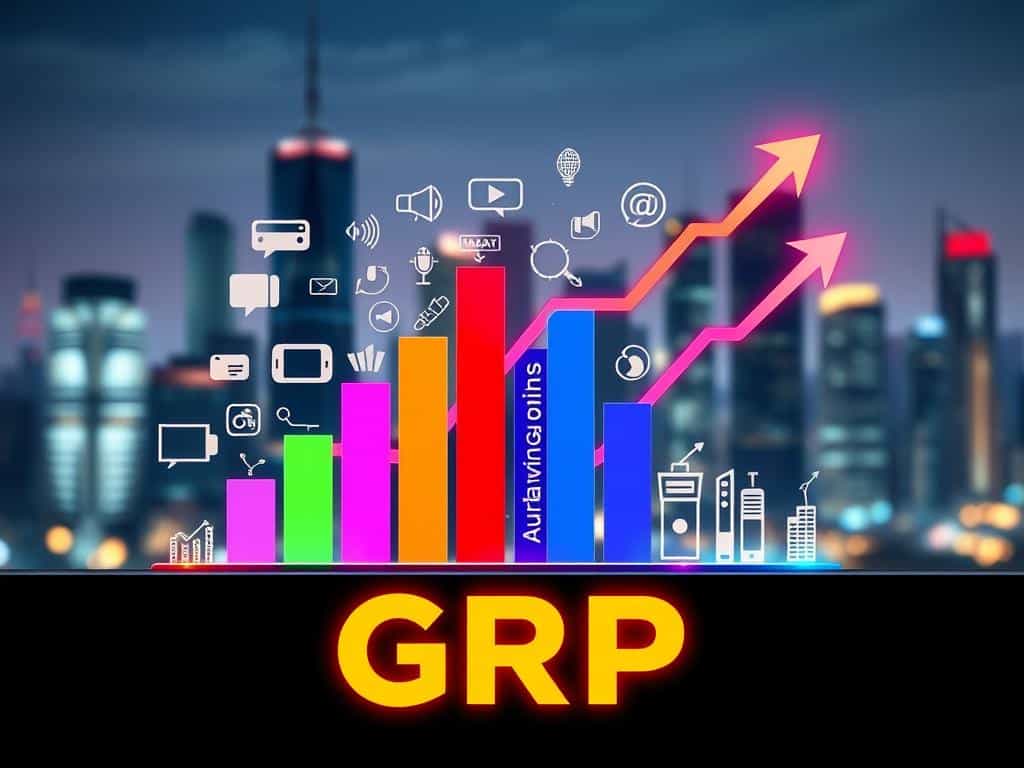In today’s digitally-driven recruitment landscape, programmatic job advertising has emerged as a game-changer. It refers to the automated buying and selling of job ads online via a Demand Side Platform (DSP), drastically reducing the need for manual intervention. This innovative approach allows recruiters and hiring agencies to distribute job advertisements efficiently across multiple platforms, targeting specific audiences with pinpoint accuracy.
Unlike traditional methods, where job ads are manually posted for a set duration and rate, necessitating regular renewals, programmatic job advertising real-time algorithms optimize spending to reach the most relevant candidates. Real-time job advertising takes advantage of Real-Time Bidding (RTB), facilitated by automated software that completes transactions in less than a second, allowing for highly efficient and cost-effective campaigns.
The move towards talent attraction automation represents a significant advancement in recruitment marketing. By leveraging data-driven techniques and sophisticated algorithms, this method provides real-time data insights and enhances the overall efficiency of the hiring process. Whether you are part of an eCommerce giant or a budding startup, programmatic job advertising could be the key to tapping into a larger, more qualified talent pool.
Introduction to Programmatic Job Advertising
In today’s rapidly evolving digital landscape, programmatic job advertising represents a significant shift from traditional job advertising methods. This advanced technique leverages automated systems to manage and optimize job ads in real-time, enabling more efficient and targeted recruitment.
Definition
Programmatic job advertising utilizes demand-side platforms (DSPs) to automate the buying, placement, and management of job ads. By using algorithms and real-time bidding, this approach ensures that ads reach the right audience at the right time. This level of automation enables efficient budget allocation, precise targeting, and enhanced performance tracking, making it a vital component of modern recruitment strategies.
Traditional vs. Programmatic Job Advertising
Traditional job advertising involves posting job ads on various platforms and manually managing placements and budgets. This approach often lacks the flexibility and precision of programmatic recruitment. Automated hiring through programmatic methods allows companies to dynamically adjust their strategies in response to real-time data and candidate behaviors.
Here is a comparative overview to highlight the differences:
| Aspect | Traditional Job Advertising | Programmatic Job Advertising |
|---|---|---|
| Method | Manual Posting | Automated via DSP |
| Budget Management | Static | Dynamic & Controlled |
| Targeting | Broad | Precise |
| Data Utilization | Limited | Extensive & Real-time |
| Adaptability | Fixed | Flexible |
The advent of digital job advertising has transformed the recruitment landscape. Programmatic job advertising enables not just enhanced reach and precision in targeting candidates but also unparalleled control over recruitment spend, culminating in cost-effective and efficient hiring processes. By harnessing the power of DSP in recruitment, companies can stay ahead of the competition and succeed in attracting the best talent.
Key Features of Programmatic Job Advertising
Programmatic job advertising has revolutionized the recruitment landscape by integrating advanced automation, scalability, and targeting precision. As a cornerstone of modern recruitment strategies, it leverages AI and data-driven approaches to optimize job ad placements, ensuring efficiency and effectiveness.

Automation
One of the defining features of programmatic job advertising is automation. This technology streamlines the ad placement process, significantly reducing manual labor. Automation in recruitment leverages AI-powered tools like Pandologic, automating buying and selling of ad inventory through exchanges. As a result, companies can efficiently target specific audience segments in real-time. This automated job ad targeting enhances the reach and effectiveness of recruitment campaigns, providing a significant boost to ROI.
Scalability
Scalable recruitment campaigns are another vital aspect of programmatic job advertising. By enabling job ads to be posted across multiple platforms and boards with a single click, scalability ensures a broader reach. This is particularly crucial for tapping into both active and passive candidates. Statistics show that programmatic job advertising spending is about $350 million, with a projection for growth, indicating increased scalability in the future. Furthermore, platforms often include over 100 publishers in their networks, ensuring extensive exposure and engagement.
Targeting Precision
The precision of candidate targeting is enhanced through sophisticated algorithms that consider various data points, such as skills, experience, and browsing behavior. Precise candidate targeting allows recruiters to pinpoint and engage ideal candidates more effectively. It’s been noted that companies with a stronger employer brand see a 43% decrease in the cost per hire, attributable to targeted recruitment efforts. Additionally, data-driven decision-making and real-time analytics enable continuous optimization, which ensures that recruitment campaigns are always performing at their best.
| Feature | Benefit |
|---|---|
| Automation | Reduction in manual labor, increased efficiency |
| Scalability | Broader reach across multiple platforms, engaging both active and passive candidates |
| Targeting Precision | Enhanced targeting accuracy, reduced cost per hire, ongoing optimization |
Benefits of Programmatic Job Advertising
Programmatic job advertising delivers several compelling advantages that enhance the recruitment process. These benefits include increased efficiency, cost-effectiveness, and expanded reach, all of which are crucial for efficient talent sourcing and attracting a broad candidate reach.
Efficiency
Programmatic job advertising significantly boosts efficiency through automation. By automating tasks like posting and optimizing job ads across various platforms, recruiters save valuable time, allowing them to focus on more strategic aspects of talent acquisition. The use of automated rules helps in identifying underperforming ad campaigns, thereby reducing the cost-per-application and directing ads to specific media channels where desired candidates are active. This ensures a higher conversion rate, which indicates the effectiveness of the advertising strategy.
Cost-Effectiveness
One of the standout benefits of programmatic job advertising is its ability to provide cost-effective recruitment solutions. Implementing real-time analytics facilitates on-the-fly campaign adjustments, optimizing ad spends and reducing costs. In fact, up to 40% of job advertising spending is wasted when not combined with programmatic advertising. By focusing on cost-per-quality-applicant rather than sheer quantity, companies can significantly lower their costs per hire while attracting higher qualified applicants. This strategic approach helps in optimizing the budget and improving overall recruitment ROI.
Enhanced Reach
The methodology employed in programmatic job advertising facilitates a broad candidate reach, ensuring ads achieve widespread visibility among relevant prospects. Platforms like Orion Talent optimize diversity and military-rich applicant pools, helping companies meet Diversity, Equity, and Inclusion goals. Leveraging an extensive network, these platforms distribute jobs from a client’s Careers Site or ATS to a broad network of partners and a large internal database comprising over 500,000 subscribers. This networked approach inherently multiplies the potential candidate pool, driving appropriate candidates into the recruiting funnel and ensuring that roles are filled with the right talent.
| Advantages | Details |
|---|---|
| Efficiency | Automation speeds up the job ad posting process, enabling efficient talent sourcing and boosting conversion rates. |
| Cost-Effectiveness | Real-time analytics enable cost-effective recruitment solutions, reducing ad spend and focusing on qualified applicants. |
| Enhanced Reach | Expansive network increases broad candidate reach, ensuring relevant ads are visible to the right candidates. |
Platforms for Programmatic Job Advertising
Programmatic job advertising ensures your job ads reach the right audience with precision and efficiency. Three major platforms that support this technology are Facebook, LinkedIn, and the Google Display Network. Each offers unique advantages and suits different social recruitment strategies, making them indispensable for various types of job campaigns.
Leveraging Facebook job ads allows recruiters to tap into a vast and diverse user base. The platform’s advanced targeting capabilities enable you to reach passive candidates who might not be actively looking for a job but are open to new opportunities. Facebook job ads utilize automated algorithms and real-time data to optimize your job postings, ensuring they appear before the most relevant audience based on interests, demographics, and user behavior.

With over 2.8 billion monthly active users, Facebook provides unmatched scale and reach for your job ads. The platform’s dynamic ad formats and rich analytics further enhance the effectiveness of social recruitment strategies. Key metrics like click-through rates, impressions, and application numbers help track performance and refine your approach, ensuring maximum impact and cost-effectiveness.
LinkedIn is the go-to platform for professional networking, making it ideal for roles requiring specific skills and expertise. LinkedIn recruiting empowers businesses to pinpoint candidates with pinpoint precision, thanks to its vast database of professional profiles. The platform’s programmatic advertising technology utilizes comprehensive data points, such as job titles, industries, and career achievements, to serve ads to the most qualified professionals.
LinkedIn recruiting benefits from robust analytical tools that offer insights into ad performance, allowing for real-time adjustments and data-driven decisions. This ensures your job ads continuously reach suitable candidates, enhancing the overall efficiency of your recruitment campaigns. Additionally, LinkedIn’s focus on professional development creates an environment where users are particularly receptive to job opportunities, increasing the likelihood of engagement and application.
Google Display Network
The Google Display Network (GDN) extends the reach of your job ads across millions of websites, making it an essential tool for broadening your audience. By incorporating the Google Display Network in your social recruitment strategies, you benefit from Google’s extensive data and algorithmic prowess, which optimize ad placement for better visibility and relevance.
GDN leverages predictive analytics and big data to identify patterns and target potential candidates effectively. This platform supports real-time bidding, allowing for smarter spending and better budgeting of your advertising dollars. Metrics such as cost-per-application (CPA) and cost-to-hire are crucial for assessing the value and impact of your campaigns on the Google Display Network.
Here’s a comparative overview of these platforms:
| Platform | Key Advantages | Best Uses |
|---|---|---|
| Facebook Job Ads | Broad demographic targeting, high user engagement | Reaching passive candidates, high-volume recruitment |
| LinkedIn Recruiting | Professional network, high precision targeting | Specialized roles, professional fields |
| Google Display Network | Extended reach, advanced analytics | Enhancing ad omnipresence, diverse audience |
Steps to Implement Programmatic Job Advertising
Implementing programmatic job advertising requires a strategic approach to ensure its effectiveness. By setting clear objectives, comprehending your target audience, and choosing the appropriate platform, you can enhance your recruitment efforts significantly. Below, we explore three pivotal steps to help you get started.
Set Clear Goals
Setting clear recruitment campaign goals is the foundation of any successful programmatic job advertising strategy. Key objectives might include increasing brand awareness, improving click-through rates, or boosting application numbers. By defining these goals upfront, you can better align your efforts and measure key performance indicators such as cost-per-application (CPA) and click-through rates.
Identify Target Audience
Conducting audience analysis in recruitment is crucial to pinpoint who your ads should reach. Use advanced analytics tools to understand the behavior and interests of your ideal candidates. This data allows for precise targeting based on demographics, device types, and online behaviors, ensuring that your job ads resonate with the right audience.
Select the Right Platform
Choosing DSPs for jobs is instrumental in the success of your programmatic job advertising campaign. Platforms like Facebook, LinkedIn, and Google Display Network, equipped with sophisticated algorithms and real-time analytics, enable you to optimize your campaigns for better results. For example, companies like GoToro have successfully aided firms such as Tri-State Nursing and CNE Worldwide Logistics in achieving impressive recruitment outcomes by leveraging programmatic advertising. Always opt for platforms that offer comprehensive features tailored for job advertising to maximize your reach and efficiency.
Is an Advertising License Required for Programmatic Job Advertising?
Programmatic job advertising streamlines recruitment by targeting specific audiences, but businesses must consider legal requirements. While not always mandatory, some regions may require an advertising license. Understanding regional laws and learning how to obtain an advertising business license ensures compliance, protects credibility, and strengthens operational legitimacy in this competitive advertising landscape.
Conclusion
Embracing programmatic recruitment is imperative in today’s competitive labor market. This approach revolutionizes traditional job advertising methods by leveraging technology to enhance accuracy, efficiency, and reach. The true value of programmatic job advertising lies in its automated, data-driven model that efficiently targets specific talent pools, ensuring high-quality candidates are matched with relevant job opportunities.
By automating the placement of job ads using software and algorithms, programmatic recruitment minimizes wasteful spending and maximizes the impact of recruitment campaigns. This innovative method uses advanced targeting: defining audience, experimenting with strategies, and utilizing retargeting techniques to keep the candidates engaged. These actions collectively streamline the recruitment process, freeing up valuable time for more strategic tasks.
The future of hiring is undoubtedly intertwined with continuous advancements in recruitment technology, and staying abreast of these changes is pivotal. Platforms like Sourcing Square exemplify how tailored advertising can significantly improve the job-seeking experience and ensure that both job seekers and employers achieve their goals efficiently. As organizations adapt to the ever-evolving digital landscape, incorporating programmatic recruitment advertising will become a cornerstone of effective talent acquisition strategies.
In conclusion, to maintain relevance and attract top talent, it is essential to integrate programmatic job advertising into your recruitment toolkit. This process not only enhances productivity and sharpens targeting precision but ultimately positions your organization to navigate and thrive in the future of hiring.








